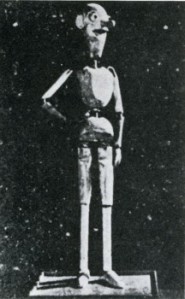Cut out Animation
Cut out animation is a technique for producing animations using flat characters, props and backgrounds cut from materials such as paper, card, stiff fabric or even photographs. The world’s earliest known animated feature films were cut out animations (made in Argentina by Quirino Cristiani); as is the world’s earliest surviving animated feature.
Today, cut out-style animation is frequently produced using computers, with scanned images or vector graphics taking the place of physically cut materials. South Park is a notable example of this transition since its first episode was made with paper cut outs before switching to computer animation.
Clay Animation
Clay animation or Claymation is one of many forms of stop motion animation. Each animated piece, either character or background, is “deformable”—made of a malleable substance, usually Plasticine clay.
All traditional animation is produced in a similar fashion, whether done through cel animation or stop motion. Each frame, or still picture, is recorded on film or digital media and then played back in rapid succession. When played back at a frame rate greater than 10–12 frames per second, a fairly convincing illusion of continuous motion is achieved. While the playback feature creating an illusion is true of all moving images (from zoetrope to films to videogames), the techniques involved in creating CGI are generally removed from a frame-by-frame process.
In clay animation, each object is sculpted in clay or a similarly pliable material such as Plasticine, usually around a wire skeleton called an armature. As in other forms of object animation, the object is arranged on the set (background), a film frame is exposed, and the object or character is then moved slightly by hand. Another frame is taken, and the object is moved slightly again. This cycle is repeated until the animator has achieved the desired amount of film. The human mind processes the series of slightly changing; rapidly playing images as motion, hence making it appear that the object is moving by itself. To achieve the best results, a consistent shooting environment is needed to maintain the illusion of continuity. This means paying special attention to maintaining consistent lighting and object placement and working in a calm environment.
A sub variation of clay animation can be informally called “clay melting”. Any kind of heat source can be applied on or near (or below) clay to cause it to melt while an animation camera on a time-lapse setting slowly films the process. An example of this can be seen in Vinton’s early short clay-animated film “Closed Mondays” (coproduced by animator Bob Gardiner) at the end of the computer sequence. A similar technique was used in the climax scene of Raiders of the Lost Ark to “melt” the faces of the antagonists.



